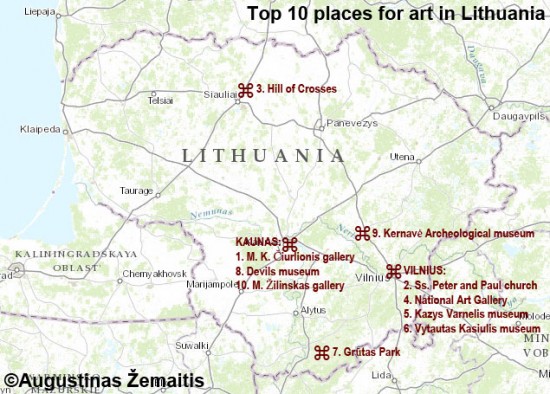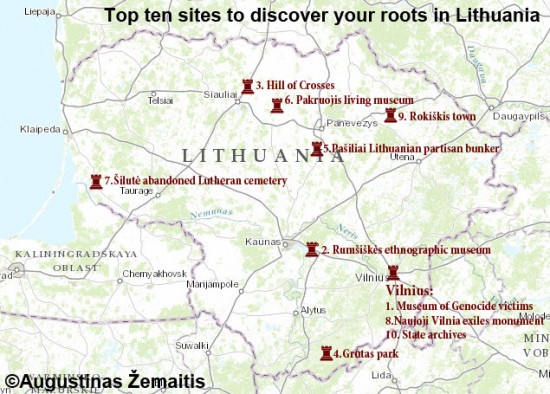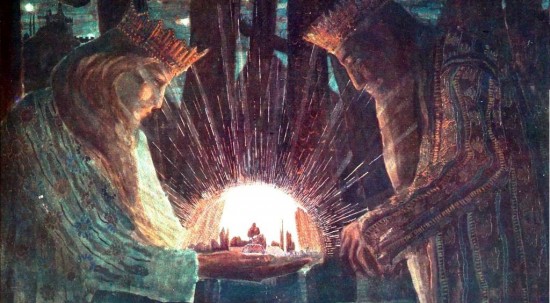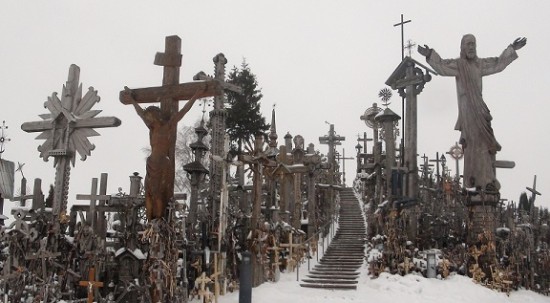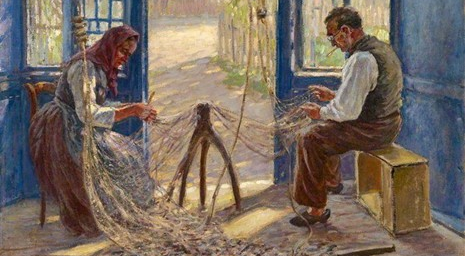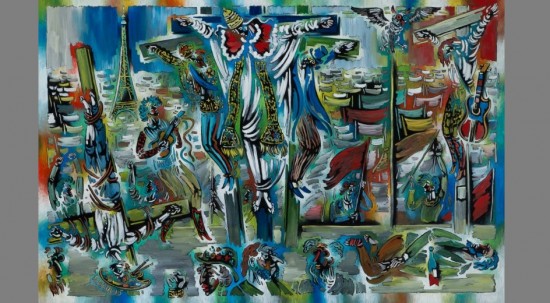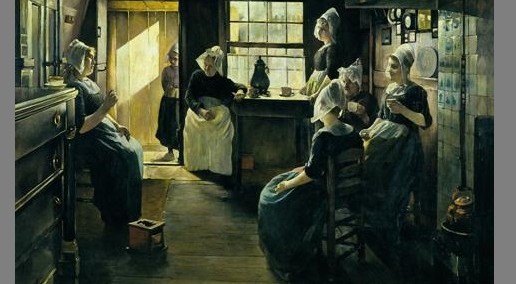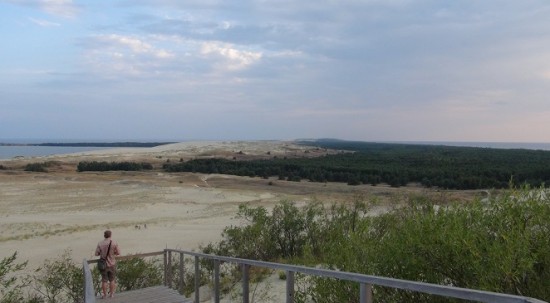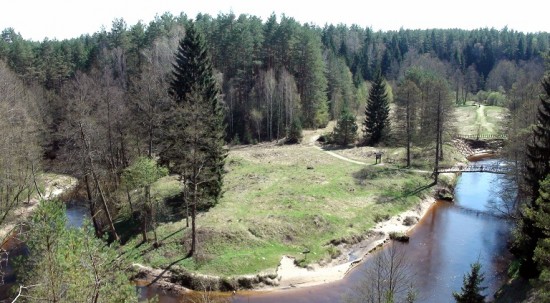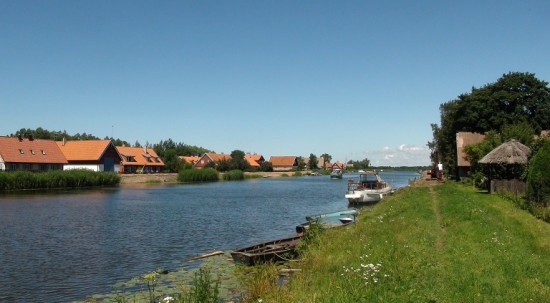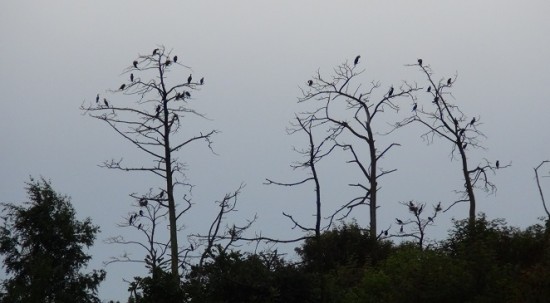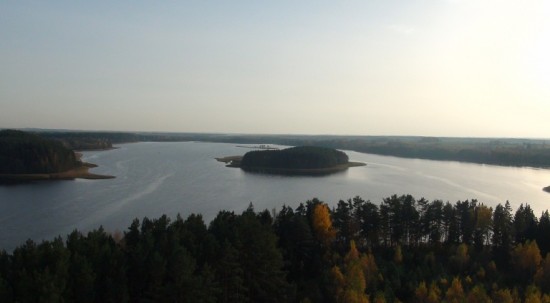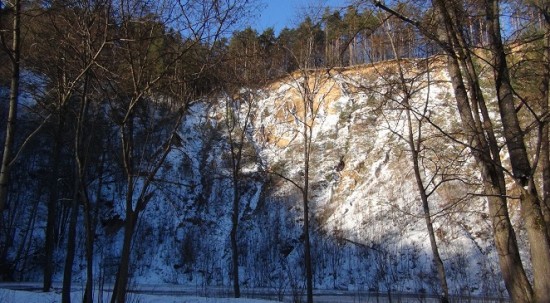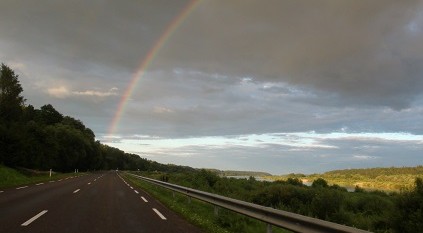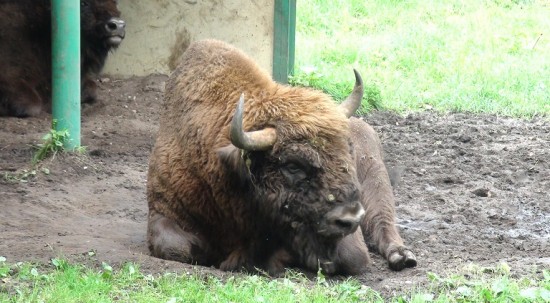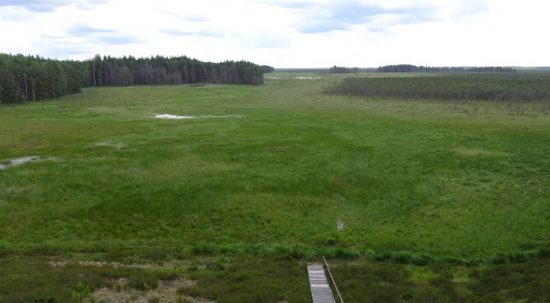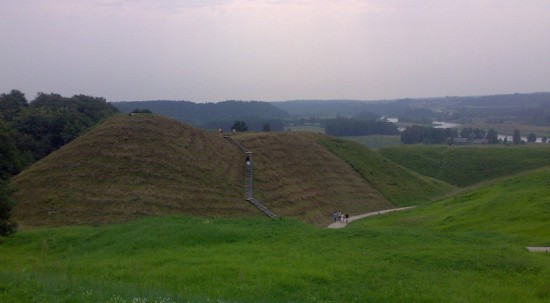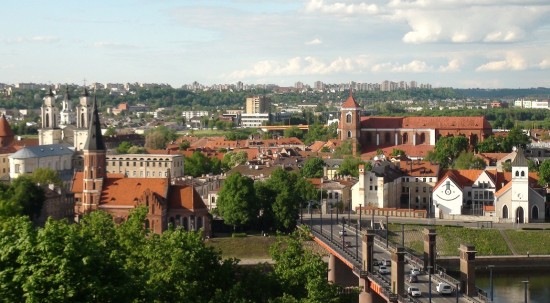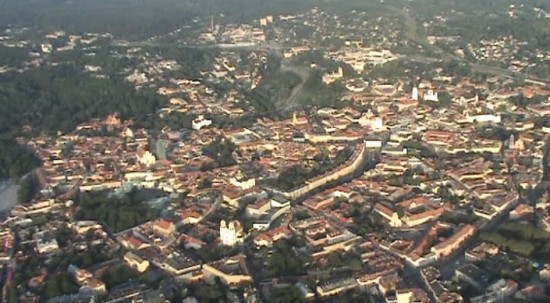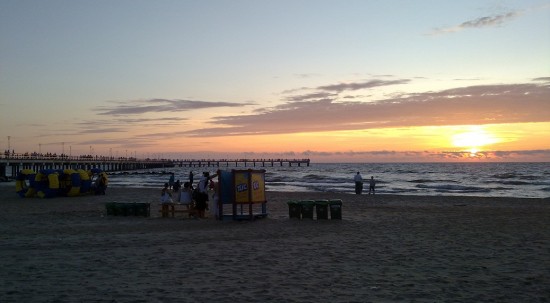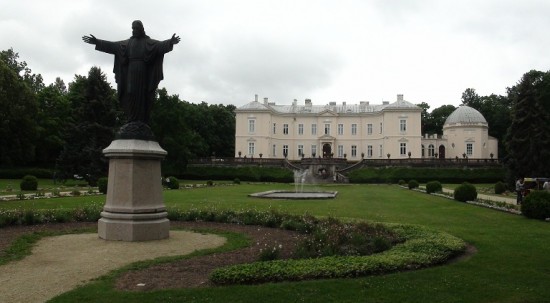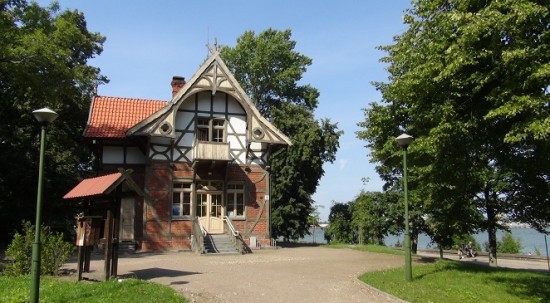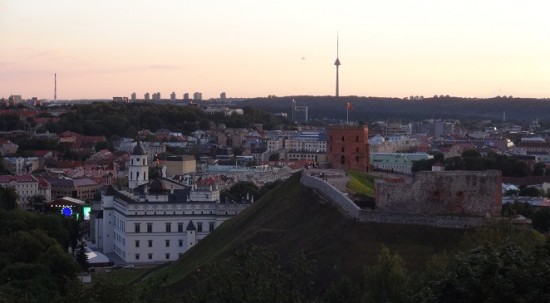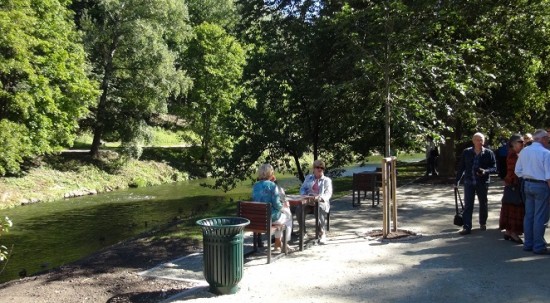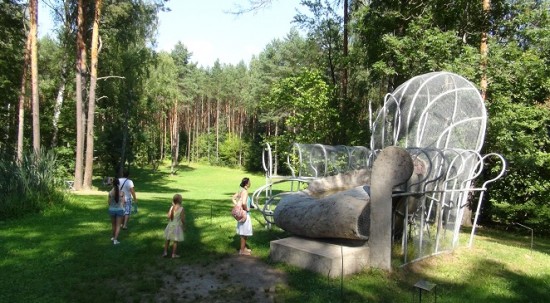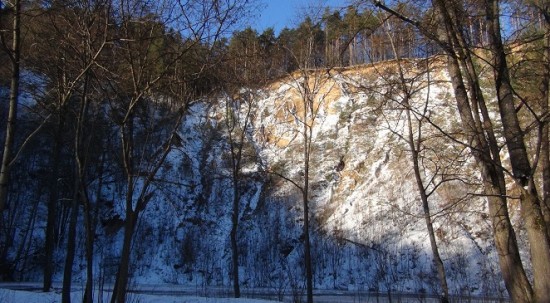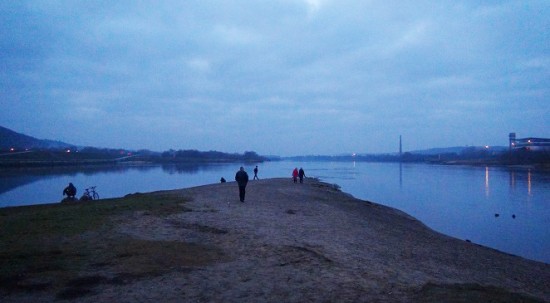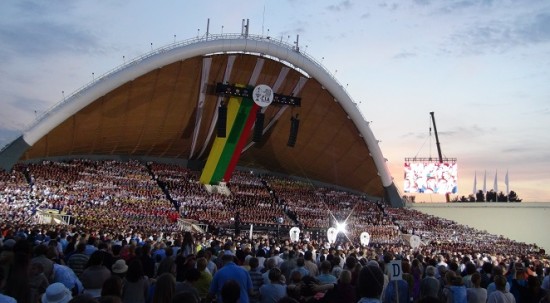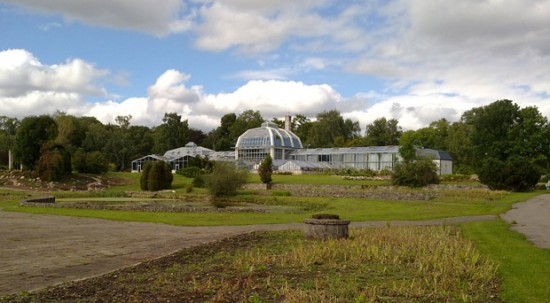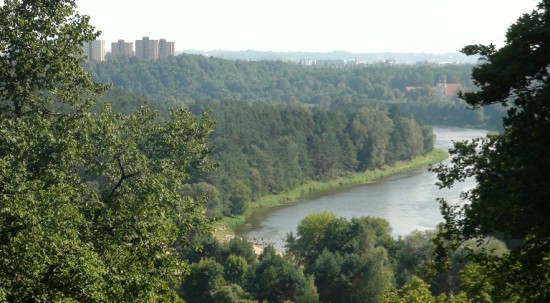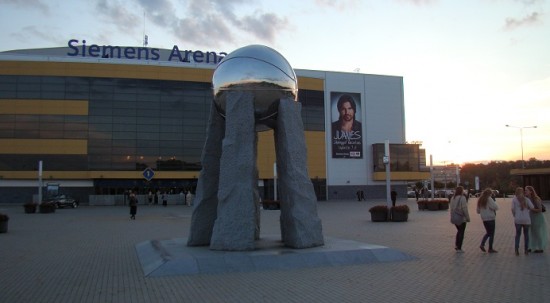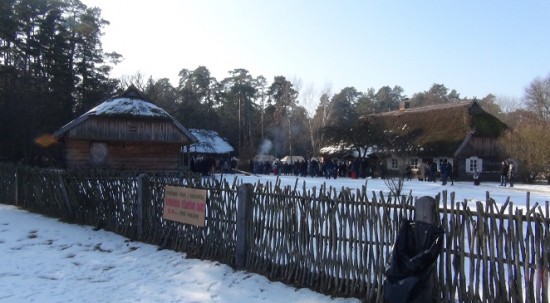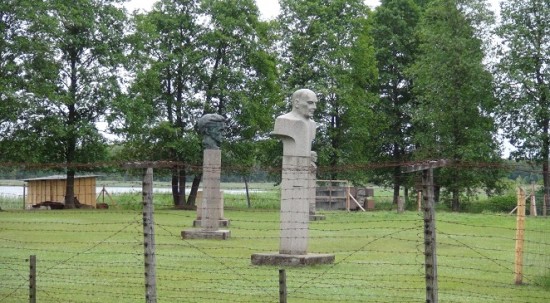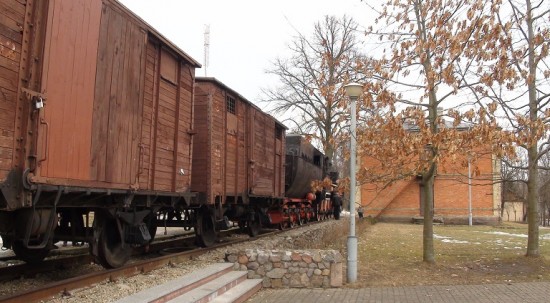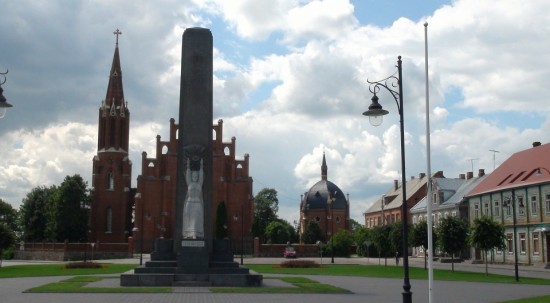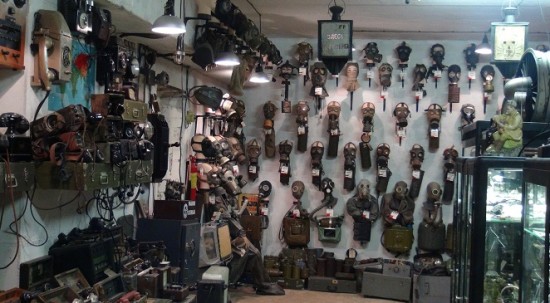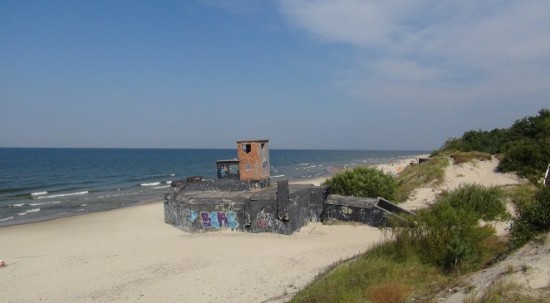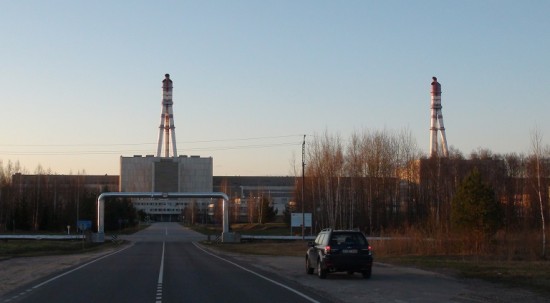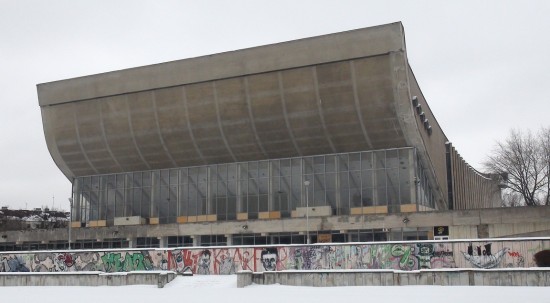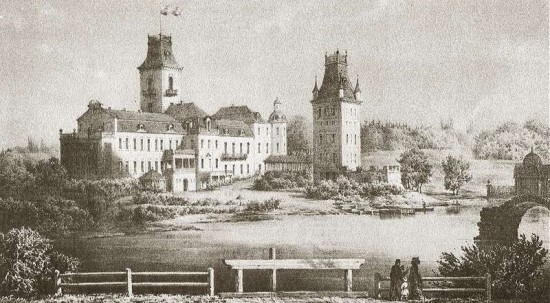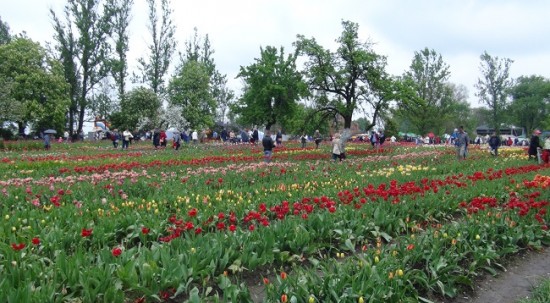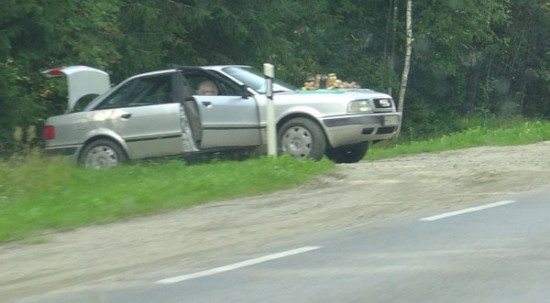Lithuania for different interests
Lithuania excels in some fields and if you have an interest there you'll have plenty to see.
*Sport Itinerary in Lithuania. 10 experiences of Lithuania for a sport lover.
*Natural Lithuania. 10 most beautiful natural locations in Lithuania.
*Military Lithuania. Top 10 military installations and sites in a country that "stood in a way" in nealy every major European and World War.
*Panoramas in Lithuania. 10 best vantage points to see Lithuanian cities and nature.
*Buildings in Lithuania. Top 10 architectural marvels.
*Parks in Lithuania. Top 10 parks.
*Places to see art in Lithuania. Top 10 museums and other public collections of various styles.
*Abandoned Lithuania. 10 interesting places to see the gone-by eras and ideologies.
*Destroyed Lithuania. 10 great buildings destroyed under the occupational regimes of 1940-1990.
*Tracing forefather's steps. If you are of Lithuanian heritage these 10 locations will help you learn how your forefathers lived and why they have left.
*Lithuania through the year. The ever-changing seasons of Lithuania.
*UNESCO sites in Lithuania. 10 sites and events of Lithuania inscribed into the UNESCO lists.
Top 10 locations to see Art in Lithuania
The followers of some Lithuanian artists claim that they (especially M. K. Čiurlionis) lack a worldwide recognition solely because they are from Lithuania (the political reasons, e.g. foreign occupations, rendering the main Western markets inaccessible most of the time).
Decide for yourself if that is true by visiting local art museums and galleries. Moreover, check the elaborate Lithuanian folk and religious art which has received UNESCO recognition.
Here are 10 locations every fan of visual arts should check in Lithuania:
1. Try to understand why symbolist Mikalojus Konstantinas Čiurlionis is considered to be *the* Lithuanian painting genius by visiting a museum dedicated to his otherworldly works in Kaunas New Town.
2. Visit Saint Peter and Paul church (Antakalnis borough of Vilnius) which could just as well serve as a museum of white Baroque art with its ~2000 sculptures showing the entire variety of life here and hereafter. This is the pinnacle of the religious art that the wealthy noble families of 17th and 18th centuries used to pay for.
3. Witness the best repository of UNESCO-inscribed Lithuanian art of crosscrafting - the Hill of Crosses near Šiauliai. It is a holy place rather than a museum, meaning the crosses still serve their original purpose and provide quite an atmosphere for pilgrims and other visitors alike.
4. Have a somewhat encyclopedic look at Lithuanian 20th century art at the National Art Gallery (Vilnius Šnipiškės borough).
5. Enjoy a unique synthesis of a medieval building and 20th century optical art in Kazys Varnelis museum (Vilnius Old Town). Both a modern artist and an avid collector Lithuanian American Kazys Varnelis had to live outside his Soviet-occupied homeland, but returned after independence and bequeathed his works.
6. Enjoy the adorable colors of Vytautas Kasiulis art at a museum dedicated to him (Vilnius New Town). He was yet another Lithuanian emigrant painter.
7. Understand why Vytautas Kasiulis, Kazys Varnelis and many others had fled Soviet-occupied Lithuania by visiting Grūtas park (Druskininkai), a grand repository of demolished Soviet statues and other propaganda art that once stood all over the Lithuanian downtowns. The Lithuanian artists who haven't emigrated, been expelled or murdered by the Soviets were all forced to manufacture such Socialist-realist propaganda art, their creativity totally contrived by censorship and canons.
8. Be stunned by the hundreds of devil statuettes in the Devils museum in Kaunas. In Lithuanian folk tradition devil is treated quite differently from the Christian canon, being an "evil yet silly and sometimes compassionate" figure rather than a nearly omnipotent Evil force. The figurines have been collected by painter Antanas Žmuidzinavičius whose own works are also exhibited nearby.
9. Take a trip to the Museum of Archeology in Kernavė, where some of the earliest known Baltic artworks and jewelry is exhibited. Some of the modern Lithuanian jewelry and designer work now includes these prehistoric influences.
10. Explore the Mykolas Žilinskas art gallery, an all-encompassing look at the world art (from Egyptian mummies to 20th century). Largely donated by a private Lithuanian-American collector this is Lithuania's answer to Louvre and State Hermitage, however, only a few works here are truly world-class. Kaunas New Town.

Map of the top 10 Art locations in Lithuania. ©Augustinas Žemaitis.
Natural Lithuania: Top 10 Sights
Lithuanian lovely countryside is quite sparsely populated, giving space for large pristine areas and National parks. A few of them are spectacular, others interest nature buffs as a good example of temperate European lowlands flora and fauna. Also, they provide many opportunities for active recreation. Here are our top 10 ideas to appreciate Lithuanian nature:
1.Become in awe with the dunes of Neringa, the vast lands of Lithuanian Sahara. You can enjoy its panorama from above or walk there yourself. Best locations: Parnidis dune near Nida and Nagliai reserve near Preila. UNESCO World heritage.
2.Get deep inside the massive Dzūkija National Park forest, at its prettiest in places such as Ūla exposure. If you are confident in your skills of distinguishing the edible from inedible you may try out the popular Lithuanian hobby of foraging. If you aren't, you may easily buy mushrooms and berries at the roadsides. Foraging season: Summer-Autumn.
3.Tour the extreme lowlands of Nemunas delta, famous for its bird migration routes and annual springtime floods that turn many farmstead-clad hills into islands. Angling is popular here, even through the winter ice. Main bird activity season: April-October, most birds come by during September migration.
4.Feel either awe or revulsion at the Juodkrantė cormorant and grey heron colony, believed to be the largest in Europe. The bird feces destroyed a vast patch of pine forest, leading to attempts of "protecting nature from itself" by hampering the colony's growth. Bird season: May to September (in winter they migrate out of Lithuania).
5.Swim or boat at the Lakes of Aukštaitija. Ranging from small to large they are at their prettiest at numerous protected areas (Aukštaitija National Park is the largest one).
6.Take a short hike to Pūčkoriai rock exposure to see that impressive nature exists even within Vilnius city limits. The 65 m tall cliff offers a glimpse at 20000-year-old formations. The calm suburban panorama from the top is also inspiring.
7.Drive the entire lenght of Nemunas valley road where the natural beauty is joined by old castles, manors and towns.
8.Watch the "inhabitants" of Pašiliai European bison sanctuary near Panevėžys. Some of them live in pens, others enjoy a rather large fenced area, their life can be spectated from outlook towers.
9.Arrange a tour at Čepkeliai swamp, the Lithuania's largest wetland and arguably the country's most protected habitat. Walking is limited to footpaths and even they are regularly closed for visitors. If you prefer more hands-on approach, there are swamp walking possibilities at other Lithuanian wetlands.
10.Hike over Kernavė hillforts, once a location of Europe's last pagan capital (14th century) that has since turned into dust, leaving a bunch of iconic small hills behind. UNESCO World heritage.
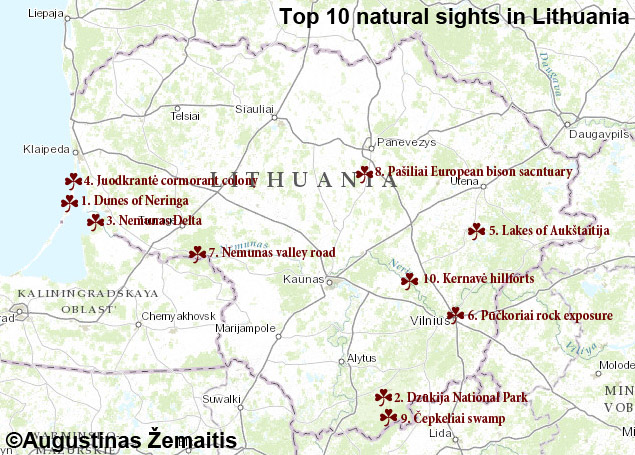
Map of the top 10 natural locations in Lithuania. ©Augustinas Žemaitis.
Top 10 panoramas
If you love looking down from high up you could do that even in lowland Lithuania. Masts and towers have been constructed where there are no hills. Moreover, most of the best vantage points are free of charge. Here are our suggestions:
1. St. John's belfry is the tallest building in Vilnius Old Town (68 m) and a recent renovation ensured that it may be easily ascended by an elevator (summer only). The breathtaking views from here are the best in Vilnius as you will be located right in the middle of one of the Europe's largest medieval towns.
2. The 52 m tall Parnidis sand dune near Nida seems to be an end of a civilization in more than a single way. After an easy short hike to the top and looking southwards you will see neverending dunes and forests (known as the Lithuanian Sahara). They are squeezed from both sides by massive waters - Baltic Sea and the Curonian lagoon. And Parnidis dune is also the end of Lithuania, the end of European Union, the end of NATO and Catholic world as much of what you will see will be in Russia.
3. Kaunas is definitely at its best when looking from the Aleksotas vantage point, its gothic churches proudly rising above the Hanseatic old town. It is arguably the best urban vantage point in Lithuania. Free of charge, no climbing needed.
4. The classic Lithuanian nature of lakes and forests is at its best at the 36 m Lake Sartai observation mast (Baršėnai village), guyed and trembling in the wind. The long and narrow lake and its islands are one of the Lithuania's prettiest natural panoramas. Free of charge, no elevator.
5. Druskininkai cable car is the only one in Lithuania and offers great views of the canopy of lush Dzūkija forests and Nemunas river with its island. Unlike most cable cars, this one was built on lowland terrain precisely to offer the views, rather than to access high altitude locations.
6. Gediminas hill castle tower views are the most popular in Vilnius and are especially variable as Old Town is visible on one side while new districts are on the other. You will be standing near the Lithuania's prime flag - the first thing every modern conqueror of Vilnius was masting his flag there. WW2 guerillas would have risked their lives to secretly host their flag on the tower and they witnessed the same view of the city as you would. These days the frail may ascend the castle hill using a lift.
7. The views from the Three Crosses Hill in Vilnius Old Town may be similar to that from the Gediminas Castle hill with one important exception: you may see the castle tower itself and Vilnius skyline is never complete without this red-brick city symbol.
8. Whatever high the observation masts, towers and hills would be nothing can be the same as actually silently raising above the ground in a hot air balloon. With one of the world's highest numbers of balloons per capita and balloon-friendly laws Lithuania is certainly a great place for that. Every summer morning and evening a group of balloons rises above Vilnius and many other places, and you may book your place in one of them.
9. Vilnius TV Tower is the nation's tallest building (326 m) and while its observation deck is lower (165 m) it's still the highest in Lithuania. That said, the views from there lag behind places in the Old Town as the TV Tower is located in blunt Soviet districts. The entire observation deck is an overpriced revolving restaurant and the ascension prices make it the Lithuania's most expensive fixed vantage point (arguably also a tourist trap).
10. Palanga Sea Bridge may be not that high above sea level (only ~5 m in fact) but it has captured romantic feelings and imagination of some 6 generations. Constructed as a "bridge" that goes into the sea and ends at ~470 m it replaced an original wooden predecessor (built 1882). Strolling to the end of the bridge is a must for any visitor of Palanga resort and it is best enjoyed with one's loved one during sunset when the sun settles down into the Baltic Sea. Alternatively, you may try to witness the fury of the storms when the waves could even splash you if you are standing on the lower platform. Looking towards the continent you may see sea shores all the way up to Latvia. Free of charge.

Map of the top 10 panoramas in Lithuania. ©Augustinas Žemaitis.
Top 10 parks in Lithuania
Park culture in Lithuania is getting popular again, together with pastimes such as running and cycling. While many historic manor parks have been greatly damaged by Soviets, some are getting restored. Those are 10 most interesting parks:
1.Experience the largely lost culture of manor parks at the Palanga botanic park. Declared a "botanic park", the 101 ha informal park of Tiškevičiai family by French architect Andre survived in its entirety, without being overbuilt by Soviet buildings. Filled with flowers, plants, trees, hosting a palace and a folly Lourde, it hugs the Baltic Beach.
2.Grab a ferry to get into Smiltynė forest in Klaipėda, which is a pine forest sandwiched between Baltic Sea and Curonian Lagoon, offering great beaches and maritime-themed museums.
3.Be rewarded by great panoramas of Vilnius Old Town after taking unexpectedly strenuous paths of Hill park. Three Crosses hill offers some of the best views.
4.Enjoy the recently-restored Bernardine garden in Vilnius Old Town. Originally used for the plants of nearby monks, it now serves as Vilnius's prime zone for strolling.
5.Watch the modern art at Europe park (Vilnius suburbs), actually a large open-air museum of contemporary sculptures not far away from the geographic center of Europe.
6.Become in awe with the Pūčkoriai rock exposure at the Pavilniai Regional park (Vilnius suburbs).
7.Watch the Lithuania's two largest rivers (Neris and Nemunas) converge from the Santaka (Confluence) park of Kaunas Old Town.
8.Visit the Vingis park of Vilnius which not only serves as the location for strolls of Vilnius residents but also the place of some of the largest events such as the Song Festivals.
9.See the various plants in Kaunas botanic park.
10.Enjoy the remaining manor buildings and views over the Neris valley in Verkiai park of Vilnius suburbs.
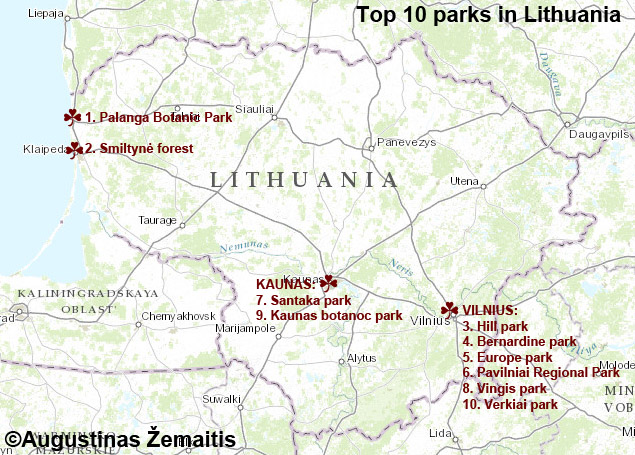
Map of the top 10 parks in Lithuania. ©Augustinas Žemaitis.
Sport travel top 10 in Lithuania
Lithuanians love the professional sports. The major sportsmen are widely seen as warriors fighting for their national honor. Basketball teams are especially loved but there are other ways to experience the spirit of Lithuanian sport while in Lithuania.
1.Spectate a basketball match of Žalgiris Kaunas, the basketball team that is the top Lithuanian sports franchise. Choose a game versus the major Western European teams or the local arch-opponent Lietuvos rytas from Vilnius. The season is autumn-to-spring with major matches in spring. In summer the national team makes use of the Lithuania's largest Kaunas Arena for friendly matches.
2.Go all the way to Joniškis to a unique basketball museum there created by an enthusiast owner. Activities include watching the final 3 seconds of Munich Olympics finals and trying on a shoe of Arvydas Sabonis, the most famous Lithuanian basketball player and the first European drafted by NBA.
3.For a truly Lithuanian sport seek for a game of Ritinis (a.k.a. Ripka), once played by medieval shepherds. The amateur-only ritinis league holds a single "tournament weekend" per month (May to September) when all the teams convene at some town to play numerous games. There are no tickets and you won't find many fellow spectators there but you'll likely find the sport unexpectedly interesting [video presentation of Ritinis rules]. Ritinis may also be seen at some cultural festivals.
4.Try to arrange your time in Lithuania so it would coincide with some major International basketball event (World cup, Eurobasket, Olympic games), then watch that game at a bar and celebrate together at streets should there be a playoff victory. The time before these international events is also interesting for numerous friendly matches played by the national team, while immediately after the tournament a "welcome back ceremony" takes place.
5.If you prefer football (soccer) go to a game of Žalgiris Vilnius, the most decorated and followed club in Lithuania (although this following is far behind that which Western European football clubs enjoy).
6.Spectate a match of motoball in Kretinga, which is a kind of football played on motorcycles. The season is spring-to-autumn.
7.Check some of the awards and medals Lithuanian sportsmen won over the entire 20th-century Lithuanian sports museum in Kaunas Old Town.
8.For a modern sports entertainment watch the 1000 km endurance race held annually in a makeshift circuit near Palanga resort. Attracting everything from "beaten up clunkers" to buggies and Lamborghinis (driven by hobbyists, professional drivers and millionaire businessmen alike) it also gets a lot of media attention.
9.See the Basketball monument in front of Vilnius arena which serves as a symbol for Lithuania's national sport, preferably combining this with a basketball match there by the local Lietuvos rytas team, one of the two top basketball clubs of Lithuania. A nearby street has lampposts decorated with pictures of Lithuania's sports hall of famers.
10.If you are into traditions watch the annual Lake Sartai horse race - although it was moved from the traditional lake ice to a hippodrome and is more of an event than a sport.
P.S.:
For ice hockey fans the team of choice is Elektrėnų energija, its past successes having turned Elektrėnai into a true hockey town that even gave two NHL players despite its population of ~15 000. It is Lithuania's sole professional ice hockey team.
For a local rugby union experience, visit Šiauliai which has most top league teams. Rugby union is amateur-only in Lithuania.
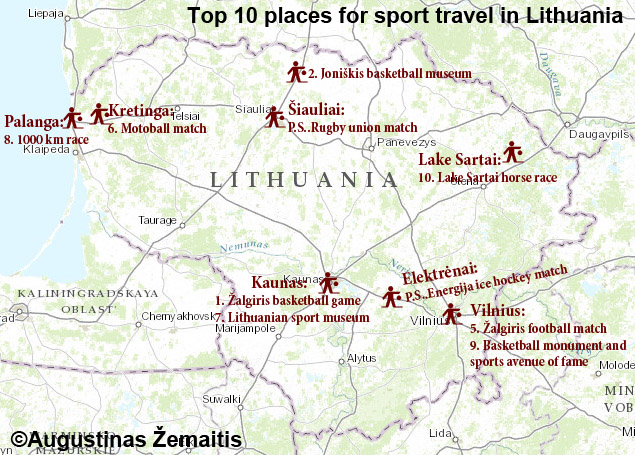
Map of the top 10 locations and experiences for sport travel in Lithuania. ©Augustinas Žemaitis.
Top 10 locations to explore Lithuanian roots
Over a million people worldwide (outside Lithuania) are ethnic Lithuanians. If you are one of them and you seek more bonds with your heritage, here are 10 best places you can visit in Lithuania to learn more.
1.If your forefathers left or were expelled in 1940s-1950s, visit the Museum of Genocide victims (Vilnius New Town) to learn more why the second wave of Lithuanian emigrants escaped Lithuania as the Soviet army was returning in 1944 and how hundreds of thousands of those remaining were expelled eastwards in the Soviet Genocide (or killed outright).
2.If your forefathers left in 1860s-1920s, feel the atmosphere of pre-industrial Lithuanian village in Rumšiškės Folk Museum. Well into the 20th century the majority of Lithuanians lived in villages and farmsteads similar to ones transported into Rumšiškės. This was a result of a deliberate Russian Imperial policy to leave Lithuania non-industrial. If your Lithuanian forefathers emigrated before the 1920s, it is highly likely they also lived that way and left the land for industrial job opportunities in America or Western Europe.
3.If your Catholic forefathers left in 1860s-1900s or 1940s-1980s, visit the Hill of Crosses and learn the story behind it. A unique-in-the-world place has hundreds of thousands of crosses erected by common people to signify Catholic Lithuanian faith, which solidified the nation in its struggles for freedom (all of them against non-Catholics). Hill of Crosses originated in the 19th century (when Russian Imperial regime promoted Orthodox religion). It continued to be secretly expanded under the Soviet occupation (1940-1990), however, dangerous that was. Religious persecutions were a popular reason to leave occupied Lithuania. Many emigrants were pious Roman Catholics; they established massive Lithuanian churches and monasteries in places such as the USA.
4.If your forefathers left in 1940s-1980s, see how Soviet propaganda encroached the Lithuanian art in Grūtas park (near Druskininkai). Under the Soviet occupation, there were tight rules on what an artist could create, resulting in many run-of-the-mill realist sculptures and paintings of "Soviet heroes". Non-conforming artists could have been banned from creation, expelled or arrested; some have committed suicide. Still, many have left Lithuania successfully, especially ~1944 (right before Soviets reoccupied the country). In the West they have retained the freedom of expression; much of the best 20th-century Lithuanian works of art and literature have been created abroad, merging the worldwide trends and longing for the lost homeland.
5.If your forefathers have participated in failed 1831, 1863 and 1944 struggles for freedom, feel the hopelessness of standing against a Russian army at a rebuilt makeshift partisan installation at Pašiliai forest near Panevėžys. It is small and far from mind-boggling: but so was the entire Lithuanian guerilla war versus a massive Soviet military. That 1944-1953 anti-Soviet campaign was the 20th century's longest European guerilla war but there were equally futile uprisings against Russian Imperial occupation back in 1831 and 1862-1863. Those who lost their cause were commonly murdered or persecuted. Many captured fighters and their supporters were expelled to even harsher conditions of Siberia - but a few managed to flee westwards, promoting Lithuanian ideas from there.
6.If your ethnic Lithuanian forefathers left in 1860s-1910s, Check the "living museum" weekend event at Pakruojis manor (have someone to translate the performances for you if you don't speak Lithuanian). With 43 buildings the Lithuania's largest manor is impressive to look at. However, while its non-Lithuanian nobility thrived, the Lithuanian peasantry under them suffered, as the depictions of forced labor and some reenactions of corporal punishments show in the living museum. Russian Empire abolished serfdom only in 1861: prior to that Lithuanian peasants were a de facto property of local nobles (mostly Russians and Polish-speakers), who could have even beaten them as slaves. While Lithuanian peasants were allowed to freely move after 1861, they were not given any land, obliging them to continue working for the same landowners (if they would stay in native villages). Many Lithuanians chose to emigrate abroad instead (something they were banned from doing before 1861, that's why Lithuanian emigration began only then).
7.If your Lutheran Lithuanian, German or Jewish forefathers left or were expelled in the 1940s, light a candle at an abandoned Lutheran cemetery of Šilutė to respect the population groups that were nearly entirely wiped out in the genocides of 1940-1953. People belonging to persecuted groups had to flee Lithuania or hide who they are in order to avoid a very likely death. Šilutė cemetery in question belonged to Lutheran Lithuanians and Germans who suffered Soviet Genocide in the era. The Lutheran share in Lithuanian population thus declined from 9% to 0,6%. Likewise, the Jewish share declined from 7% to 0,9% (due to the Holocaust). There were few compatriots left to take care of graves or defend them. Soviets used this as a pretext to destroy the minority cemeteries, making it most likely that the graves of your forefathers no longer survive. Lighting a candle at one of the few surviving (yet still ruined) minority cemeteries is thus symbolic. Note: even after the genocides many of the remaining Jews and Germans left Lithuania for Israel and Germany; this happened because Soviets permitted many of them to emigrate (something that was nearly impossible to the majority after 1945).
8.If your forefathers left or were expelled by Soviets in 1940s-1950s, contemplate by the cattle train monument in Naujoji Vilnia station. Such trains were used to deport hundreds of thousands of Lithuanians to the harshest corners of the Soviet Empire. Many of them perished. The first expulsions took place in June 1941, when 2% of entire Lithuanian population (including children) were kidnapped and moved out in a single week. Soon afterward German armies overran Lithuania, ceasing the Soviet Genocide for that moment. By 1944, however, the frontline was coming back and many Lithuanians knew well enough what to expect should they remain in their homeland. Instead, they have chosen to flee westwards where USA, UK, and France had no genocidal plans for their occupational zones. Many of those who did not flee were indeed expelled deep into the Soviet Union or murdered. Others had their property nationalized and were condemned to a much poorer life than their emigrated compatriots.
9.If your ethnic Lithuanian forefathers left in 1860s-1910s, visit Rokiškis town to see how a pre-modern Lithuanian town looked like. It's pretty - but ethnic Lithuanians would have visited such towns only on Sundays (for a church) and market days. They lived in farmsteads, while towns had their populations, local government and businesses dominated by minorities (Jewish businessmen, Russian officials, Polish-speaking landowners). As Lithuania declared independence in 1918 the class divisions, so rigorously supported by the Russian Empire, fell down for good (e.g. land reform was passed) and it became possible to freely move between "businessman", "craftsman", "peasant", "laborer", "landowner" classes despite ethnicity (towns then became Lithuanian-majority as former peasants flocked in). However, prior to that, changing one's social class was hardly achievable without emigration.
10.Last but not the least, do (or order) a search in the State Archives in Vilnius where much of the old documents, birth and marriage registers ended up to learn more about your forefathers. True Lithuania website provides such services and we may also help you to restore Lithuanian citizenship.
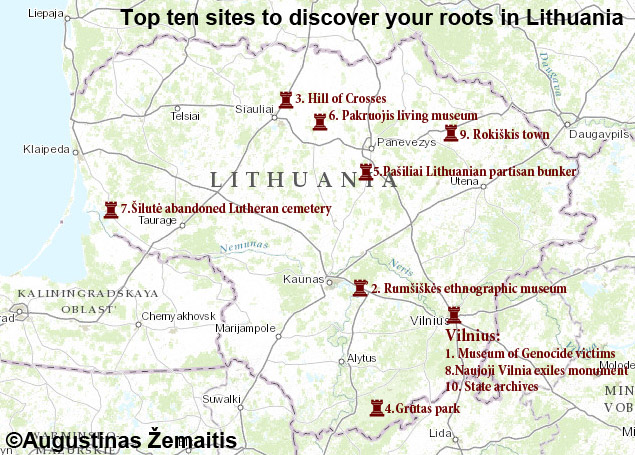
Map of the top 10 locations in Lithuania to trace your roots. ©Augustinas Žemaitis.
Top 10 military locations in Lithuania
Lithuania was a major frontline through most major European wars: Medieval crusades, Napoleonic wars, World War 1/2, Cold War.
If you are interested in modern (19th-21st century) warfare, these are the top 10 locations you should check:
1.Look down into an authentic nuclear missile shaft at the Plokštinė nuclear missile base, now doubling as a Cold War museum.
2.Spend entire day exploring the 19th-century Fortress of Kaunas that once subsumed the entire city with the aim to defend Russian Empire from invasions from the West. Many of its massive forts are now abandoned, although two converted into museums. There are also entire districts of barracks (some abandoned, some repurposed) in Šančiai and Freda, both districts also having military cemeteries (Šančiai one still in use).
3.See the massive private collection of Atomic bunker museum (Soviet districts of Kaunas) consisting of intelligence (KGB), military communications and civil defense devices. Everything is housed inside an authentic Cold War-era nuclear shelter. The museum helps to understand the atmosphere of fear that existed in Soviet-occupied Lithuania. The regime feared World War 3, while many people feared the regime itself.
4.Check the War museum (Kaunas New Town) is both as a repository of weapons, history of Lithuanian armed forces and a patriotic shrine, with a war memorial in its basement and sculptures of national revival heroes in the surrounding square.
5.Try the hands-on approach at Museum of Military Vehicles in Kaunas, a repository of military vehicles (especially Soviet).
6.Search the forests for reconstructed makeshift Lithuanian partisan bunkers to feel the hopelessness of standing against a massive Soviet army in what was the modern Europe's longest guerrilla war (1940s-1950s). One such bunker is available south of Panevėžys, near Pašiliai bison reserve.
7.Check the Memel-Nord battery on the northern beach of Klaipėda. Built as a Nazi German WW2 military installation it now serves as a small bowdlerized private museum about the lives of German soldiers on the Eastern Front (open in the Sundays).
8.Use the Klaipėda ferry to visit 19th century German Sea Fortress that guarded the entrance into the city (currently serving as the Museum of the Seas). Military ships may often be seen on the other side of the Klaipėda channel (bring binoculars).
9.Go to the Aviation museum in Kaunas (Aleksotas) that has many images of interwar Lithuania's massive air force, which owned 117 aircraft (at the time Lithuania was also a producer of fighter planes). It also has a few more modern aircraft parked on the outside.
10.Seek the now abandoned early 20th-century military bunkers which were built on Lithuanian countryside by foreign regimes that dominated it after new mobile warfare rendered the fortresses obsolete. Polish installations still stand in Vilnius suburbs (from the Polish rule of Vilnius era, 1920-1939) while entire Lithuania is spanned by DOTs - defensive bunkers that Soviets constructed in Soviet-occupied Lithuania in 1940-1941 to defend their "new western border". The line of defense was not complete before Nazi Germany attacked. One easily accessible DOT stands in northern Palanga.
P.S. If you are interested in the pre-modern military, check our top 10s for Medieval and Polish-Lithuanian commonwealth eras that include many castles and fortifications of those times.

Map of the top 10 military locations in Lithuania. ©Augustinas Žemaitis.
Top 10 abandoned buildings
Lithuania had to go through a multitude of occupations in the 20th century. The occupational regimes both forced an abandonment of buildings that represented something "politically incorrect" to them and constructed buildings that were needed only under that particular ideology. Moreover, they also shuffled economy and demography. This led to Lithuania having a multitude of prominent derelict and semi-abandoned buildings, some of them having sad stories behind their abandonment.
1. Abandoned churches of Vilnius Old Town. The Soviet occupational atheist regime closed down most of Vilnius Catholic churches, destroying their interiors. Many were reopened but the most heavily damaged ones remain closed. After all, Vilnius Old Town has 1 church per every 700 inhabitants so the Roman Catholic Church prefers building new churches in the churchless Soviet-constructed boroughs rather than reopening further Old Town churches. Most of the abandoned churches are impressive 18th-century Baroque ones. The following churches are now abandoned: Virgin Mary church (built 1768, Savičiaus st.), Lord Ascension church (built 1730, Subačiaus st.), Jesus Heart church (built 1765, Subačiaus st.), St. George church (built 1765, near Gedimino Avenue), St. Stephen Church (built 1612, west of Train Station, downhill). Unfortunately, save for special occasions or personal arrangements with caretakers the abandoned churches could not be entered, but it is possible to explore an abandoned monastery near Šv. Ignoto street.
2. Kaunas fortress. This fortress actually encompasses the whole city. One of the largest and best-surviving class A fortress of the 19th century Russian Empire Kaunas withstood merely a few weeks of siege during World War 1, marking a major turning point in military history. Nobody ever built fortresses this big ever since and Kaunas fortress with its massive ring of forts, barracks towns, Orthodox churches and soldier cemeteries has been largely abandoned. While parts of the fortress have been reused (including museums in two of the forts, paintball in another one) most of it remains derelict and unlike many other such buildings in Lithuania may be freely explored.
3. Plokštinė nuclear missile launch site. The site was abandoned well before the Cold War ended (the Western spies found out about it) and much of the metal has been later stolen but a single fully equipped shaft (without missile of course) may be entered. A Cold War museum has been recently established inside.
4. Šilutė Lutheran cemetery, eerily overgrown by a forest and with no single gravestone intact, is like an unofficial monument to the Genocide of Lithuania Minor when the Soviets murdered 300 000 local Lutherans (Lithuanians and Germans) and expelled most others from this region in 1944-1949. The cemetery is older than that but the genocide left no relatives alive to care for the graves and the new settlers of Šilutė buried their dead elsewhere. Soviet era scavenging of elaborate metal fences contributed to the cemetery's sorry state but at least it was not demolished, unlike most Lithuanian religious minority cemeteries.
5. Kaunas Žaliakalnis Jewish cemetery is another similar unofficial memorial to a genocide, in this case, the Holocaust by Nazi Germany (1941-1944). The genocide victims aren't buried here but it was the mass murders and emigration of Lithuanian Jewry that left the cemetery uncared, graves all bent and drowning after heavy rains. Soviet policies against preserving historic cemeteries also contributed heavily.
6. Grūtas Park (near Druskininkai) is nicely landscaped and far from abandoned. The main draw here are, however, the abandoned Soviet propaganda sculptures and art, moved in from all the Lithuanian cities and towns in the 1990s after that regime collapsed (and liberated people toppled its monuments).
7. Spa Nemunas in Druskininkai. This massive abandoned complex of the 1980s dates to the Soviet idea of "controlled tourism" where every city would have just a single or a few large places of accommodation. The post-independence market economy preferred a larger amount of smaller hotels and thus Nemunas was abandoned (even though new modern spas have been built at the same time), marring the face of Druskininkai. Its multiple blocks cover an entire district ranging from the 10-floor main concrete building to numerous old wooden houses.
8. Ignalina Nuclear Power Plant in Visaginas once had the most powerful nuclear reactors in the world that provided Lithuania with 85% of its energy needs. The entire town of Visaginas has been constructed by the Soviets to house its workers. The European Union requested Lithuania to close down the Soviet-built plant citing safety reasons. Its massive buildings now calmly stand at a lakeside, once-bustling bus stops no longer used. The Nuclear question is still bitter in largely jobless and rapidly shrinking Visaginas where many believe the European Union requested the plant closure solely to protect its own market from cheap Lithuanian energy. Visaginas itself now also has some abandoned and never-completed residential buildings.
9. Palace of Sports and Concerts in Vilnius (Žirmūnai borough). Celebrated for its unique brutalist architecture the 5000-seat Soviet edifice became too small for Vilnius' needs. Heritage status and its downtown location (on a place of a Soviet-demolished Jewish cemetery) ensured that replacements have been built elsewhere.
10. Palace of the Trade Unions in Vilnius New Town. Trade unions in the Soviet Union were controlled by the government (this being even more ridiculous since the government was also effectively the sole employer). However, being "workers institutions" in a (supposedly) workers society they were important for propaganda, so their lack of power has been compensated by pompousness of their edifices. That's how Lithuanian trade unions received this massive Stalinist palace on one of Vilnius tallest hills. Partly rented out and partly burnt out, the palace has been declining since independence. Every Saturday morning its vicinities host a flea market of antiques which may also interest fans of the "abandoned lives". [NOTE: The Palace of Trade Unions was demolished in the October of 2019]

Map of the top 10 abandoned buildings in Lithuania. ©Augustinas Žemaitis.
Top 10 sites destroyed under occupation
In the 20th century, Lithuania suffered more than its fair share of misery and the 1940-1990 not only killed hundreds of thousands of Lithuanians but also ravaged the nation's cities. Some buildings have been lost during World War 2, but far more were demolished under the Soviet occupation. Soviets saw many architectural wonders (old towns, churches, monuments) as not compatible with socialist regime and destroyed them. Luckily Lithuanians managed to save more than was saved in Russian and Belarus and some of what was lost have been rebuilt after 1990 (mainly monuments). Still, some of the prettiest places of Lithuania exist only in old (pre-Soviet) images.
1.Churches of Klaipėda once dotted the entire city, built with massive towers in iconic German bricks. German and Lithuanian; Lutheran, Catholic, Reformed and even Anglican. The Old Town now lacks any towers in its skyline as the Soviets had all the large churches destroyed.
2.Vokiečių-Vilniaus street was one of the key thoroughfares of old Vilnius, clad with stately churches and palaces. But the Soviets deemed such old streets to be "unsocialist" and sought to replace them by a massive highway, bisecting the Old Town in two. One entire side was destroyed, including important historic buildings: the towered Vilnius municipality, "Europa" hotel (then the largest in Vilnius), Piarists college. Luckily the death of Stalin halted further destruction and other once-condemned buildings, including the Gate of Dawn, City Hall, and St. Catherine church, were saved. The highway was never built and Vilnius Old Town is instead full of scars, now overgrown with grass and trees.
3.Kėdainiai manor palace, built ~1850, embodied the romantic ideas of its owner - artist Marijanas Čapskis (Marian Czapski). The massive building has been destroyed under the Nazi German occupation and now only the foundations, a park, and a folly minaret remains.
4.Raduškevičius Palace in Vilnius. A massive gothic revival castle-like structure of a 19th-century businessman that dominated Neris bank had most of its facade and the entire interior destroyed by the Soviets.
5.Religious minority cemeteries of Vilnius hosted many lavish gravestones of the luminaries of gone-by eras, reminding that tolerant and multireligious Vilnius always had minorities among its elite. Soviets have destroyed all this, clearing the Lutheran cemetery, the Reformed Christian cemetery, the Muslim cemetery and two Jewish cemeteries ~1960-1980. Soviet buildings and propaganda monuments that replaced them reused gravestones as a building material. Similar cemetery destruction campaigns were repeated in other Lithuanian cities. By the way, Vilnius Russian Orthodox and Russian Old Believer cemeteries were spared.
6.Kardinalija palace of Vilnius was one of the prime urban palaces owned by the Radvila family where a separate set of laws even applied. While a project for post-war repairs has been already completed, the Soviets suddenly ordered its demolition in 1957. An urban legend says that this was done for a scene of a Soviet propaganda war movie (if you have any proof or disproof for this story, please share in comments).
7.Jesus Heart church in Vilnius was to be a masterpiece of a famous architect Anton Wiwulski, celebrated for his pretty use of monolith, combining Gaudi-esque expressionism with art deco. While never completed, the church had been constructed enough to have masses celebrated inside before Soviets invaded and demolished it. While another Soviet-destroyed Wiwulski's work - the Three Crosses monument - has been rebuilt by Lithuanians, Jesus Heart church proved to be a too massive undertaking.
8.Faculty of Physics and Chemistry of Kaunas University was among the top projects of Interwar Lithuania that had transformed Kaunas from a militarized outback into a modern European city. Completed in the 1930s the massive historicist building was destroyed in World War 2 soon afterward and never rebuilt.
9.The Great Synagogue of Vilnius once served as a major center of worldwide Jewish thought, having been continuously expanded and rebuilt since 15th or 16th century. The Synagogue survived the Nazi German occupation only to be torn down by Soviets in 1955-1957. It has been replaced by a kindergarten. After independence, a statue for Vilnius Gaon (the final commentator of Talmud) has been built there to remind the past.
10.Right bank of Danė River in Klaipėda today is dominated by decaying Soviet buildings, but once it boasted some of the nicest town buildings in Lithuania, such as the towered Klaipėda market. All these have been demolished by the Soviets.

A map showing where the Lithuanian buildings destroyed during the occupation once stood. ©Augustinas Žemaitis.
UNESCO sites in Lithuania
Lithuania has 4 UNESCO heritage sites, 3 inscriptions of its art and traditions in UNESCO immaterial world heritage, 1 site on the UNESCO tentative list, 1 suggested UNESCO site, and 1 inscription in UNESCO Memory of the World. Some of the sites are great for anchoring your trip, but others may have only historical importance that is hard to understand today. Here is the full list:
1.Vilnius Historic Centre. Vilnius was once the capital of Europe's largest medieval state and its large Old Town testifies its former glory with its narrow streets, Baroque church spires, and palaces of the nobility. UNESCO world heritage.
2.Curonian Spit. The most famous natural location of Lithuania the 98 km long narrow peninsula combines the Lithuanian Sahara (massive sand dunes), pristine pine forests and some of the country's top seaside resorts. UNESCO world heritage.
3.Cross-crafting and its symbolism. While Lithuanians were Europe's final pagan country they have successfully absorbed Christian tradition into their ethnic art giving birth to the unique wooden crosses and chapel posts. Originally they adorned every yard and roadside, then many were destroyed by the Soviets but some were rebuilt in the 1990s. The best place to see the tradition is undoubtedly the constantly growing Hill of Crosses where hundreds of thousands of crosses and chapelposts have been erected by ordinary people ever since the mid-19th century. UNESCO immaterial world heritage.
4.The Baltic Way - Human Chain Linking Three States in Their Drive for Freedom. 700 km long human chain amassed some 2 million people linking Vilnius to Riga and Tallinn, some third of total Baltic populations. This demonstrated a massive will of the Baltic States to achieve freedom from the Soviet Union. It inspired similar human chains elsewhere in places like Taiwan and Israel, but neither the length nor size of the Baltic Way was ever surpassed. UNESCO memory of the world.
5.Baltic song and dance celebrations. Every 4 years, choirs from all over Lithuania and the Lithuanian diaspora are invited to Vilnius to sing Lithuanian songs together. Songs have even triggered political changes in Lithuania (the Lithuanian 1990 independence has been called the "Singing revolution"). Witnessing the Song Festival's "Day of the Songs" with a parade and performance of some 30 000 singers is a powerful experience. If visiting at another time you may still check the stand in Vilnius Vingis park where these events are held. UNESCO immaterial world heritage.
6.Sutartinės, Lithuanian multipart songs. The singers of these unique folk songs sing different lyrics at the same time, creating an interesting result. They used to be sung during the yearly farm works such as harvest but since machinery has replaced human labor there sutartinės have moved to folk music concerts. "Skamba skamba kankliai" held annually the final week of May in Vilnius is one of the festivals where you could hear them. UNESCO immaterial world heritage.
7.Trakai Historical National Park. The renovated Trakai medieval island castle is the sole water castle in Eastern Europe as well as one of the top iconic Lithuanian picture sights. UNESCO world heritage tentative list.
8.The interwar architecture of Kaunas. Kaunas uniquely had its major phase of development in the interwar period. That's because while Vilnius was occupied by Poland, Kaunas served as the Lithuanian capital. As such, it has great amounts of top interwar architecture swiftly build to turn a former Russian military outpost into Lithuania's top city. UNESCO world heritage.
9.Kernavė Archeological Site (Cultural Reserve of Kernavė). The location of the first known pagan capital of medieval Lithuania it has an aura, archeology museum, and hills once crowned by wooden castles. The medieval city itself, however, has turned into dust, replaced by an unappealing modern village. UNESCO world heritage.
10.Struve Geodetic Arc. The least interesting among Lithuanian UNESCO sites the system of small marks has been used by geographer Friedrich Georg Wilhelm von Struve to measure the meridian length. Three marks in Lithuanian territory are officially guarded. UNESCO world heritage.
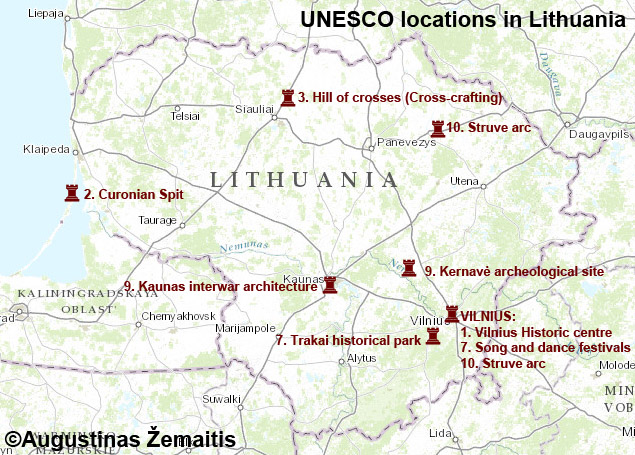
Map of the top 10 UNESCO locations in Lithuania. ©Augustinas Žemaitis.
Lithuania Top 10 natural events
Lithuania is a country with extremely distinct seasons and every month in it is different. Here are top 10 regular natural events (calendar) that paint Lithuania in different light:
1.Nemunas delta floods annually submerge vast areas of Lithuanian coastal countryside every spring, as Nemunas waters rise due to melting snow and ice. People of the area are well adapted: farmsteads are built on hilltops (that become islands), public transportation is organized by amphibious buses and temporary tractor ferries.
2.Yellowing leafs (October-November) of Lithuanian trees paint the entire Lithuanian nature in deep yellow in Autumn. As the leafs fall, they also cover the ground, making it yellow as well. The Lithuanian Word for November is "Lapkritis" (literally Leaffall).
3.Freezing of rivers and lakes takes hold of Lithuanian waters for at least several weeks each winter. Recreational fishermen love to go ice fishing at the time, while others may walk on ice or even drive (but they should be extremely careful and check the ice thickness). Before the ice cover forms and after it melts the rivers carry floating ices and the hotter-than-air water sends steam into the air.
4.Blossoming (May) turn Lithuanian fields and trees into multicolor canvases in late Spring.
5.Baltic Sea sunset attracts romantic couples to the beaches of Lithuanian resorts every summer evening. As Lithuanian shoreline faces West in its entirety, the iconic "sunset into the sea" is visible from Lithuania's every Baltic beach on clear days.
6.Berry and mushroom season (Autumn) sends entire Lithuanian families to foraging as a hobby. This is perfectly legal, often freely allowed even in private property areas. However, those who are unsure of their ability to distinguish edible from inedible should buy their berries at mushrooms at many forest roadside stalls or marketplaces instead.
7.Harvest season still brings many Lithuanian urban dwellers to the countryside, where they help their villager relatives to do the harvest. Once a nearly universal practice, this becomes rarer as the generations change, but the harvest is still more than visible in a society where agriculture employs some 12% of the entire workforce.
8.Bird migration takes place every Spring and Autumn, as many species of birds spend summers in Lithuania but winters somewhere further south. Curonian Lagoon area falls under massive bird migration corridors and it became the birthplace of bird ringing (Ventė station in Lithuania still operates). One could see flocks of birds in many places during the migrations.
9.Longest day in Lithuania is over 17 hours long from sunrise to sunset. You can read outside all night as it never actually gets fully dark. The shortest night is celebrated by a traditional Lithuanian festival of Joninės (Rasos).
10.Longest night of Lithuania is 17 hours long. Daytime is merely 7 hours, meaning that most employees begin their daily jobs before sunrise and complete them after sunset. Luckily, much of this darkest period falls during holidays, offering nice Christmas illuminations, New Year fireworks, commemorations of Baby Jesus birth, expectations for Christmas presents or just Christmas shopping for the materialistic.




